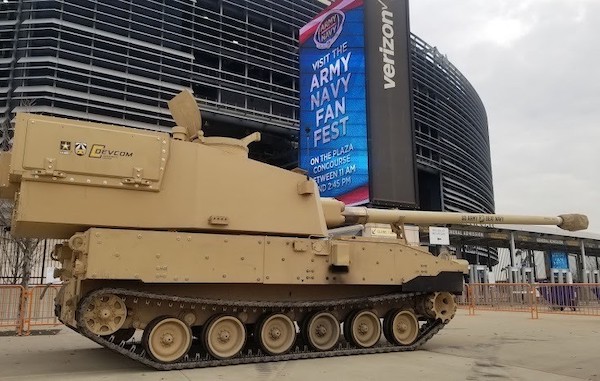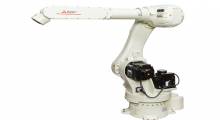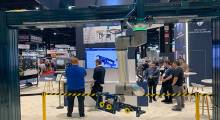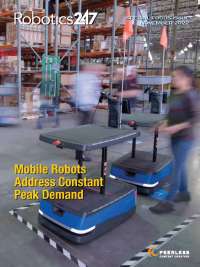Sarcos Defense today announced that the Army Applications Laboratory of the U.S. Army Futures Command has awarded it a $1 million contract. The company will test a system that it has developed for ammunition handling and maneuvering.
Prolonged lifting and placing of 100-lb. rounds of ammunition from a rack to a cannon loader causes fatigue and injuries among soldiers. Sarcos devised its robotic ammunition-handling system to reduce this strain.
Salt Lake City, Utah-based Sarcos Defense is a subsidiary of Sarcos Technology and Robotics Corp., which develops systems to augment humans to enhance productivity and safety. The company said it works closely with the U.S. Department of Defense and other federal and international government agencies to identify capability gaps.
Sarcos Defense said it conducts research and development, as well as rapid systems integration to transform Sarcos' commercial products into teleoperated systems that meet specific mission requirements.
Sarcos Defense to step up robot arm testing
The Sarcos robotic ammunition handling solution uses a dexterous robotic arm that was designed to be integrated into the U.S. Army’s fleet of Self-Propelled Howitzer Systems, specifically the Extended Range Cannon Artillery system. Sarcos will perform extensive testing of this robotic system to ensure it meets requirements for Army use, including shock and vibration absorption.
The robot must also be able to withstand extreme temperatures, humidity, and sand and dust incursion, said the defense contractor.
“The Extended Range Cannon Artillery system is used extensively in the U.S. Army for long-range precision firing, but the downside to this system is the weight of the ammunition needing to be hand-loaded by soldiers in the field,” stated Reeg Allen, vice president of business development at Sarcos.
“Our ultimate goal with the development of this robotic ammunition solution is to help the Army successfully accomplish their missions with lower rates of injury by having a robot lift and place the heavy ammunition rounds,” he said. “We are excited about this accelerated testing that will help get this robotic system into the hands of Army personnel soon.”
Sarcos reports revenue increase, plans for 2023 deliveries
Sarcos Technology and Robotics Corp. last month reported a net loss of $22.5 million, compared with a third-quarter 2021 net loss of $37 million. The company said its total revenue for the third quarter of 2022 was $4.7 million, up from $1.1 million in the same period of 2021. It attributed this to a $3.8 million increase in revenue from R&D services following its acquisition of RE2 Robotics Inc.
Among its accomplishments in the past year, Sarcos said it met customer field-trial milestones for shipyard maintenance and repair and airport logistics, as well as program deliverables for vegetation management. The company has also continued developing supervised autonomy and software-as-a-service capabilities, and it successfully demonstrated its technology for the U.S. Navy's Repair Technology Exercise (REPTX).
The company predicted that its total revenue will be between $13 million and $15 million for 2022, with the delivery of services on certain contracts to move from the fourth quarter of 2022 to the first quarter of 2023.
Sarcos began initial production of commercial units of its Sapien 6M mobile manipulators ahead of schedule during the third quarter. It said it still expects to begin production of its Guardian XT teleoperated robot by the end of 2022. The company said both systems will be available for delivery to customers in the first half of 2023.
“We achieved two vital milestones in the third quarter as we started production of commercial systems of our Sapien 6M and demonstrated the effectiveness of our technology in the field to the U.S. Navy,” said Kiva Allgood, president and CEO of Sarcos. “These achievements and the advancement in our software are a testament to the ability of our team to work together to achieve our goals and position Sarcos for success.”
In addition, Sarcos plans to begin initial production of commercial units of its Guardian XO full-body powered industrial exoskeleton in the second half of 2023.
Article topics
Email Sign Up


















